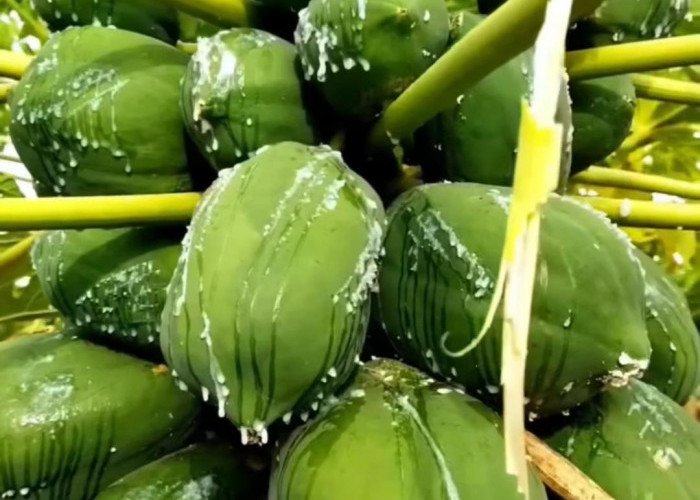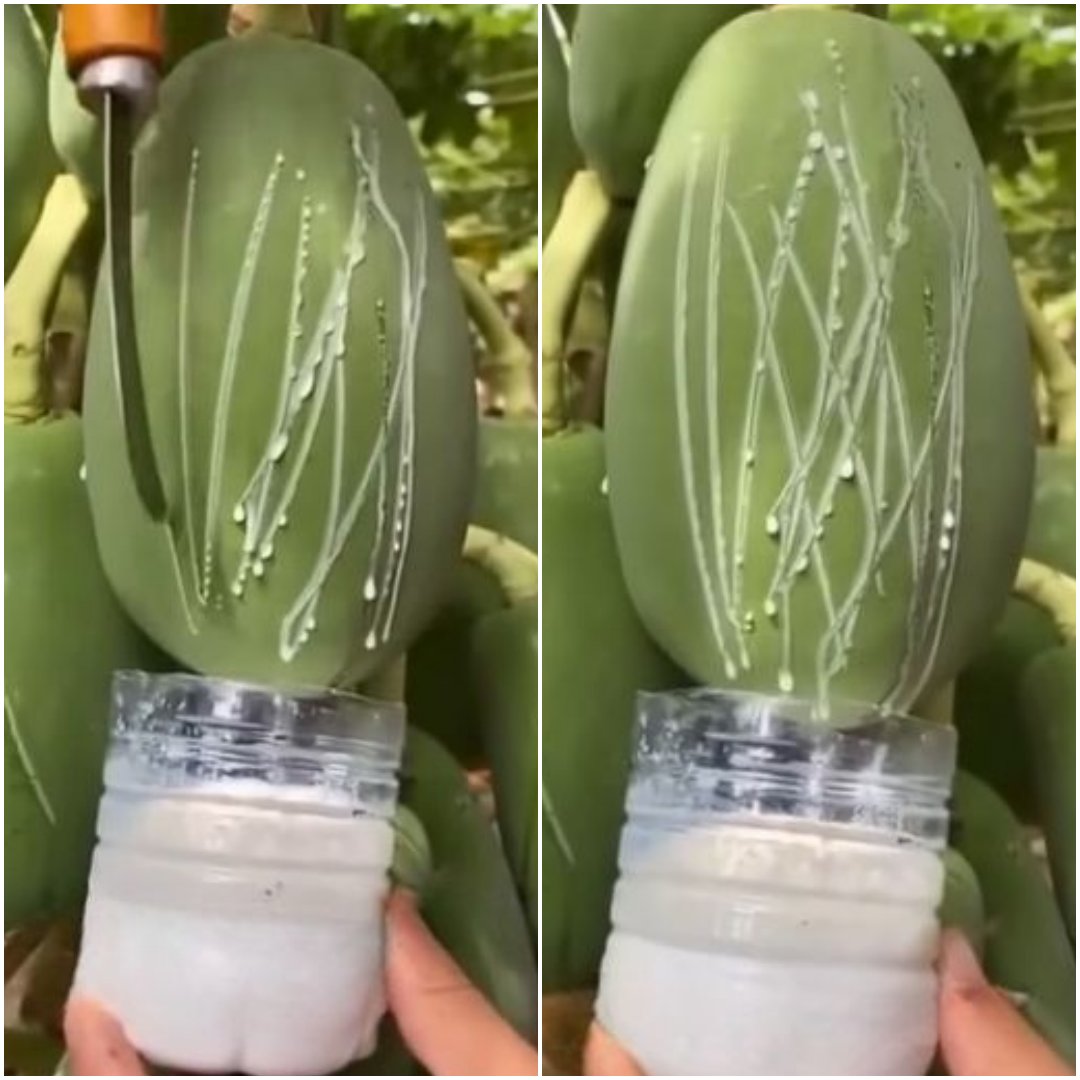Everybody loves papaya, a tropical fruit celebrated for its sweet flavor, vibrant color, and impressive nutritional value. Whether enjoyed fresh, blended into smoothies, or tossed in fruit salads, papaya is a staple in many households and cuisines around the world. But while papaya’s fruit takes center stage, most people overlook another extraordinary part of this plant: its sap.

Papaya sap—also known as latex—is a milky fluid harvested from the green, unripe fruit and even the stem and leaves of the papaya tree (Carica papaya). For centuries, traditional medicine and industry have quietly harnessed this natural substance, yet its remarkable benefits and uses remain largely unknown to the general public. In this article, we’ll dive deep into the world of papaya sap: what it is, why it’s so valuable, and how it’s transforming health and industry worldwide.

### What is Papaya Sap?
**Papaya sap** is the sticky, white, milky secretion that appears when you cut or scratch the surface of an unripe papaya fruit, its leaves, or its stem. This sap is the plant’s natural defense mechanism against insects and pathogens, but for humans, it’s a source of multiple beneficial compounds—especially powerful enzymes.
#### The Main Components of Papaya Sap

The primary active ingredients in papaya sap are **proteolytic enzymes**, most notably **papain** and **chymopapain**. These enzymes are nature’s tools for breaking down proteins into simpler molecules, a property that makes papaya sap extremely valuable in both traditional remedies and modern industries.
Other components of papaya sap include:
– **Alkaloids**
– **Flavonoids**
– **Phenolic compounds**
– **Glycosides** These contribute to the sap’s medicinal and biological activities.
### The Medicinal Value of Papaya Sap
#### 1. **A Natural Digestive Aid**
Papain, the star enzyme in papaya sap, is renowned for its ability to aid digestion. For people with digestive troubles, papain supplements made from papaya latex can help break down tough protein molecules in meat and dairy, making food easier to digest and nutrients easier to absorb. That’s why papaya extract is found in many digestive enzyme supplements today.
#### 2. **Wound Healing and Skin Health**
Traditional cultures have long used papaya sap as a topical remedy for cuts, burns, and wounds. The sap’s enzymes help remove dead tissue (a process called debridement), promoting faster healing. Some modern ointments for chronic wounds, ulcers, and burns contain papain extracted from papaya latex for precisely this reason.
Papaya sap is also an ingredient in certain skin care products, credited with:
– Exfoliating dead skin cells
– Reducing scars and blemishes
– Soothing inflamed or irritated skin
#### 3. **Anti-Parasitic and Antimicrobial Properties**
Papaya sap is a traditional remedy for intestinal parasites, thanks to its potent enzyme content. Studies have shown that papain can disrupt the protective membranes of some parasites and bacteria, making it easier for the immune system to destroy them.
#### 4. **Potential Anti-Inflammatory and Pain-Relieving Effects**
Research indicates that the compounds in papaya sap may have anti-inflammatory effects, potentially useful for people suffering from conditions like arthritis. Chymopapain, for example, has been studied as an injectable treatment for herniated discs and related back pain, although its medical use now requires careful regulation.
### Industrial and Culinary Uses of Papaya Sap
#### 1. **Meat Tenderizer**
Papaya sap’s proteolytic enzymes make it an ideal natural meat tenderizer. Marinating meat with papaya sap or products derived from it can break down tough muscle fibers, resulting in softer, juicier dishes. That’s why papain powder is often used in commercial meat processing and home cooking.
#### 2. **Clarifying Agent in Food and Beverages**
The food industry uses papain from papaya sap to clarify beer and other beverages by breaking down proteins that cause cloudiness. This application ensures a clear, visually appealing product for consumers.
#### 3. **Textile and Leather Processing**
Papaya sap enzymes are used in the textile and leather industries to help remove hair and other unwanted proteins from animal hides, streamlining the tanning process. This natural approach is more environmentally friendly compared to harsh chemical treatments.
### How to Harvest Papaya Sap Safely
Harvesting papaya sap involves making small cuts on the unripe green fruit or on the tree’s stem and collecting the milky latex that oozes out. However, caution is necessary:
– **The sap can irritate skin or eyes** due to its strong enzymes.
– **Direct consumption of raw sap is not advised**—it must be processed or diluted to be safe.
Most commercial papain and papaya extracts go through careful purification and quality control before reaching consumers.
### The Future of Papaya Sap: Research and Innovation
Ongoing research continues to uncover new potential for papaya sap in medicine and biotechnology. Recent studies are investigating its application in:
– **Cancer therapy** (for its potential to inhibit tumor growth)
– **Antiviral treatments** (due to its ability to disrupt viral proteins)
– **Novel wound dressings** (combining sap extracts with modern materials)
As interest in natural and sustainable resources grows, the value of papaya sap is likely to increase even further.
### Myths and Precautions
Despite its many benefits, it’s important to address misconceptions:
– **Papaya sap is not a cure-all.** While useful, it’s not a substitute for professional medical treatment.
– **Allergies and sensitivities are possible.** People with latex allergies or sensitive skin should be especially cautious.
Always consult a healthcare provider before using any new supplement or topical remedy containing papaya sap.
### Unlocking the Hidden Power of Papaya
Most people love papaya for its taste and health benefits, but the real treasure may be hidden within its sap. This milky latex is a powerhouse of natural enzymes and bioactive compounds with a wide range of uses—from healing wounds and aiding digestion to revolutionizing industries.
The next time you enjoy a slice of sweet, juicy papaya, remember: the value of this humble fruit goes far beyond its flesh. Its sap, quietly collected and carefully harnessed, stands as a testament to the incredible potential of nature’s gifts.
